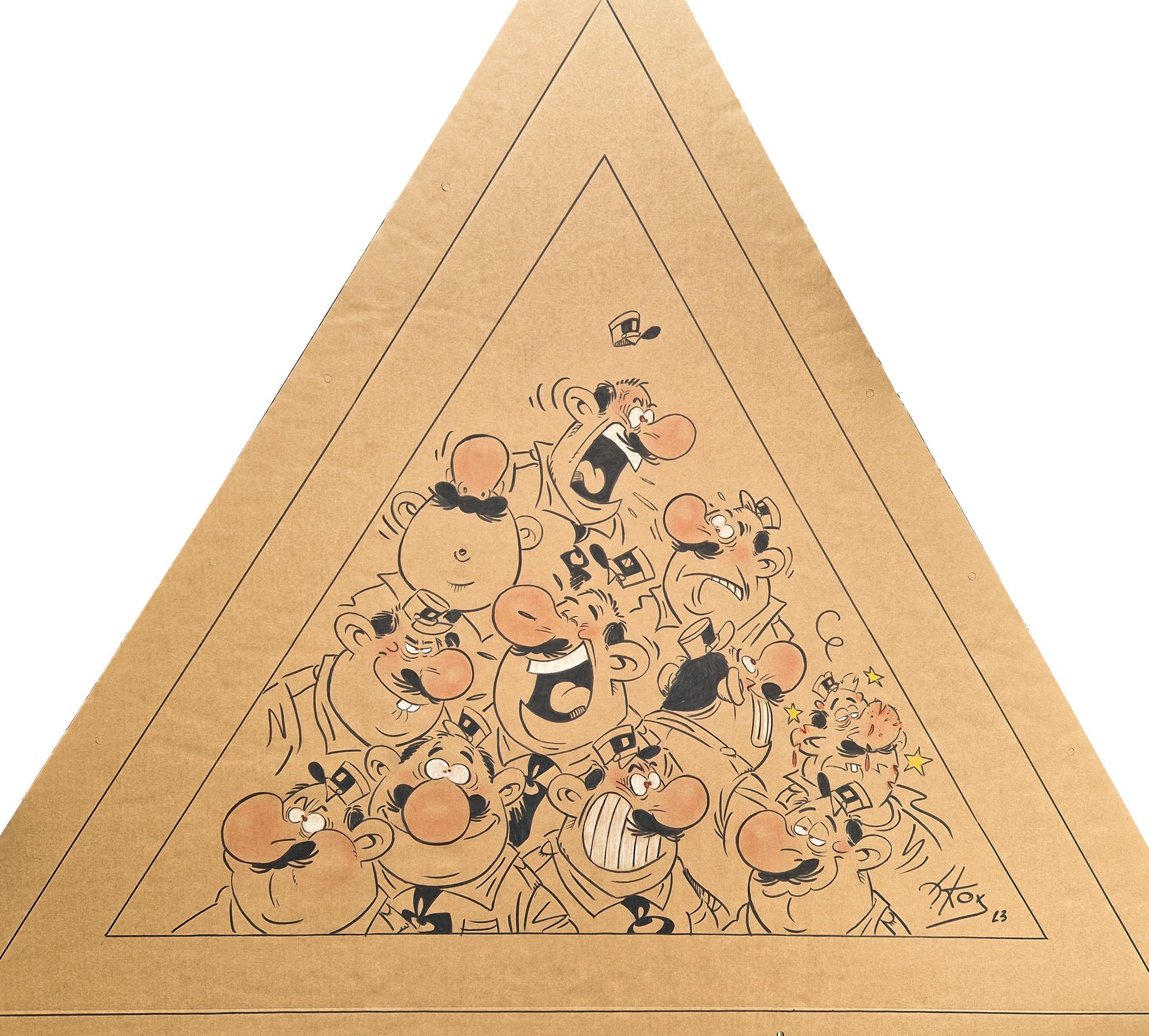Description
Daniel Kox. Original felt-tip artwork, exclusively in aid of "Une tente une vie", on cardboard. Signed. Wood frame with Plexiglas glass included: 155 x 125 cm Born in Ottignies, Belgium, on February 4, 1952, Daniel Kox has been drawing since a very early age. While searching for a graphic style and characters of his own, he was lucky enough to meet an experienced author - Jidéhem - who gave him precious keys to dream of becoming a cartoonist himself one day. At eighteen, Kox published his first drawings in the monthly Samedi-Jeunesse. Two years later, he was hired by Dino Attanasio, for whom he drew the pencils for Signor Spaghetti. The turning point in his career came in 1974, when he met Peyo. Kox wanted to join the famous author's studio but Peyo, who was working on the cartoon The Flute with Six Smurfs, did not have time to train a new assistant and so he asked Raoul Cauvin to keep the young author busy by writing him a few pages of script... Cauvin offered him the gags of a police officer, number 212, which began publication in Spirou in 1975... Except that "troubleshooting" soon became a phenomenon. Spirou readers loved Agent 212, as well as Kox's drawing and his incredible gift for expressiveness! Peyo encouraged Daniel to focus on this increasingly popular character rather than joining his studio. And he was right. The agent's success grew and grew. A great name in cartooning for all audiences, Daniel Kox has been delighting readers of L'Agent 212 with gags for over forty years. Tone of the line, inimitable mimics, compositions to the small onions: Kox is a master of the drawing and the laughter, whose popular success was never denied. Working on the scenarios of the immense Raoul Cauvin, he progressively fed the gags of his favorite character, revealing himself to be a formidable scriptwriter! The ORIG-AMI is a cardboard shelter measuring 117 x 235 x 150 cm. It's insulating, structurally protective, folds like an accordion, can be carried like a backpack and is recyclable. The homeless shelter was designed on the principle of origami, a Japanese paper-folding technique.
11
Online
Daniel Kox. Original felt-tip artwork, exclusively in aid of "Une tente une vie", on cardboard. Signed. Wood frame with Plexiglas glass included: 155 x 125 cm Born in Ottignies, Belgium, on February 4, 1952, Daniel Kox has been drawing since a very early age. While searching for a graphic style and characters of his own, he was lucky enough to meet an experienced author - Jidéhem - who gave him precious keys to dream of becoming a cartoonist himself one day. At eighteen, Kox published his first drawings in the monthly Samedi-Jeunesse. Two years later, he was hired by Dino Attanasio, for whom he drew the pencils for Signor Spaghetti. The turning point in his career came in 1974, when he met Peyo. Kox wanted to join the famous author's studio but Peyo, who was working on the cartoon The Flute with Six Smurfs, did not have time to train a new assistant and so he asked Raoul Cauvin to keep the young author busy by writing him a few pages of script... Cauvin offered him the gags of a police officer, number 212, which began publication in Spirou in 1975... Except that "troubleshooting" soon became a phenomenon. Spirou readers loved Agent 212, as well as Kox's drawing and his incredible gift for expressiveness! Peyo encouraged Daniel to focus on this increasingly popular character rather than joining his studio. And he was right. The agent's success grew and grew. A great name in cartooning for all audiences, Daniel Kox has been delighting readers of L'Agent 212 with gags for over forty years. Tone of the line, inimitable mimics, compositions to the small onions: Kox is a master of the drawing and the laughter, whose popular success was never denied. Working on the scenarios of the immense Raoul Cauvin, he progressively fed the gags of his favorite character, revealing himself to be a formidable scriptwriter! The ORIG-AMI is a cardboard shelter measuring 117 x 235 x 150 cm. It's insulating, structurally protective, folds like an accordion, can be carried like a backpack and is recyclable. The homeless shelter was designed on the principle of origami, a Japanese paper-folding technique.
